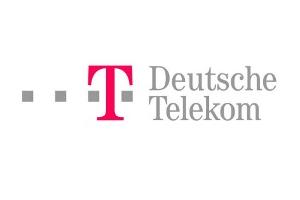Deutsche Telekom has underlined its ongoing commitment to the development of open RAN (radio access network) technology, by announcing details of a multi-vendor trial around programmable radio access networks that demonstrates the potential of the Non-RT RIC and rApp concept to automate and optimise disaggregated RAN.
The Non-RT RIC brings intelligence, agility, and programmability to disaggregated radio access networks and enables third-party applications (rApps) that can perform closed-loop automation and optimisation of RAN elements and resources. However, the multi-vendor integration of Non-RT RIC, rApps and SMO (social media optimisation) also introduces challenges that must be addressed.
Working together with AirHop, Juniper Networks, VIAVI Solutions and VMware, the partners completed a RAN closed-loop optimisation proof of concept (PoC) within Deutsche Telekom’s lab environment in a multi-vendor setup based on ONAP and O-RAN specifications. Closed loop rApp algorithms were onboarded and deployed on partners’ Non-RT RIC. During the PoC, partners executed two use cases:
- Physical cell identifier (PCI) optimisation focused on detection and resolution of PCI confusion and collision scenarios.
- Energy savings dynamic multi-carrier management (ESMC) using an artificial intelligence and machine learning (AI/ML) model, trained to determine the optimum time to enable/disable sleep-mode on capacity cells in order to save energy while maintaining user quality of experience (QoE).
Initial tests were performed in a real end-to-end lab setup using a small O-RAN network to validate end-to-end configuration and performance management (CM and PM) integration for a real network environment. Most tests were executed on a more complex network setup using an O1 network emulator (RIC tester) to validate rApp logic and stress test the RIC components to benchmark the various solutions.
The multi-vendor framework presents integration challenges. However, this PoC has shown from a high-level perspective that the adoption of the SMO, Non-RT RIC and rApp framework is promising in how it allows for the decoupling of optimisation algorithm development, the supporting platform development and the system integration so that components from different parties can form a disaggregated RAN optimisation concept.
“With this PoC, we set out to assess the technical integration complexity of the components delivered by each party, the level of customization required, to gauge the maturity of products and to identify potential future standardisation requirements,” states Petr Ledl, VP, head of network trials and integration lab, Deutsche Telekom.
A detailed outline of these challenges, as well as customizations and future standardisation requirements, plus areas of further focus, are detailed in the trial White Paper (pdf, 1.2 MB).
“At DT our primary focus is always on driving innovation to support the best customer experience. The RIC and rApps are key to programmability, automation, and optimisation in radio access networks. Taking the learnings from this successful trial, we will now continue the work with our ecosystem partners to accelerate Non-RT RIC/rApp development towards production readiness”, adds Petr Ledl.
RAN Intelligent Controller (RIC) and apps
A RAN Intelligent Controller (RIC) is a software-defined component of the open RAN architecture that’s responsible for controlling and optimising RAN functions behavior. The RIC enables fast onboarding of third-party applications (Apps) that automate and optimise RAN operations at scale. It also supports new use cases while providing lower introduction time and lower total cost of ownership (TCO) of mobile operators as well as enhancements to customers’ quality of experience (QoE).
The non-real-time RIC (Non-RT RIC) is part of the service management and orchestration (SMO) framework, centrally deployed in the service provider network. It enables greater-than-one-second control and policy guidance over the RAN elements and their resources through so called rApps.
It also enables AI/ML capabilities for the RAN and uses long-term network data, such as performance metrics as well as enrichment data from external applications to train and generate AI/ML-driven applications.
Comment on this article below or via Twitter: @VanillaPlus OR @jcvplus






